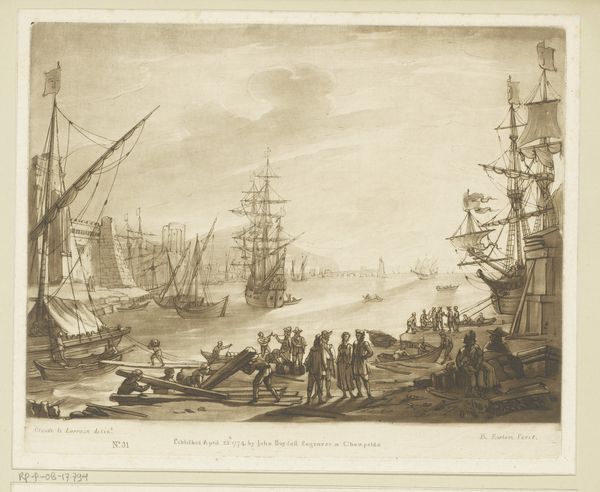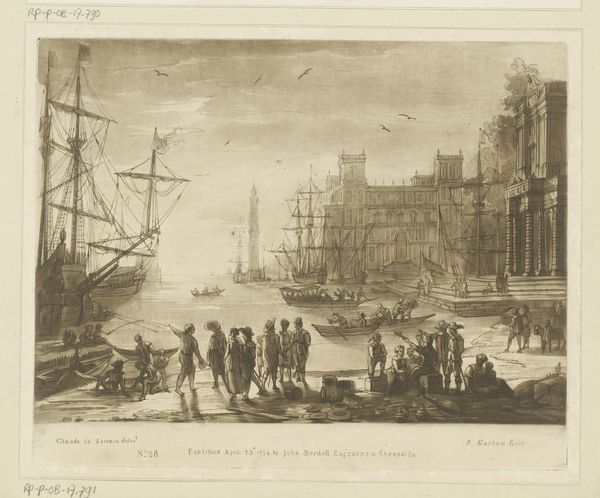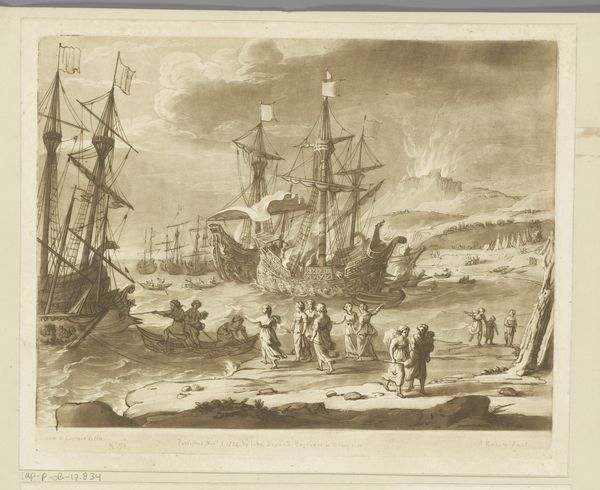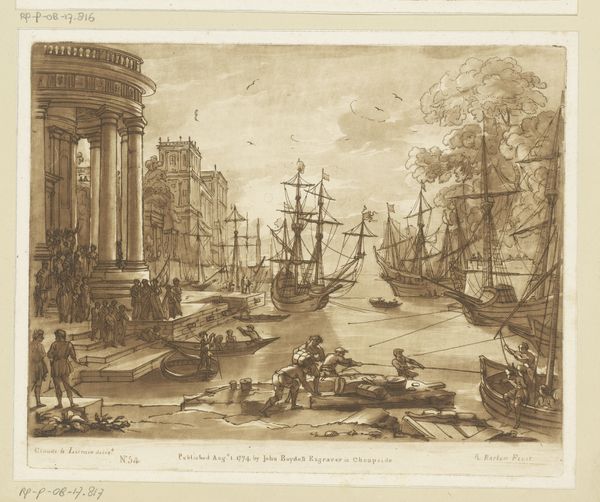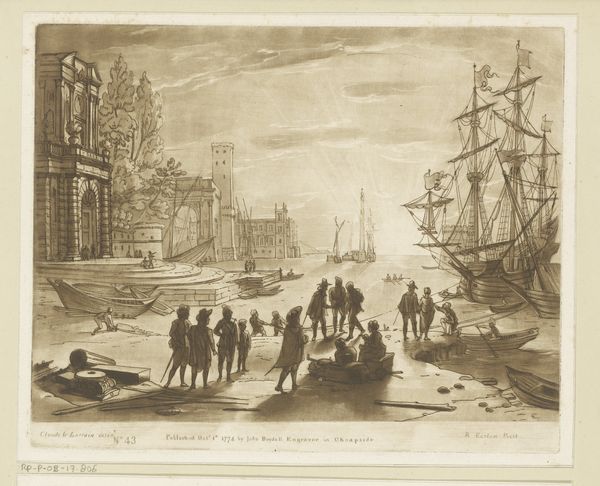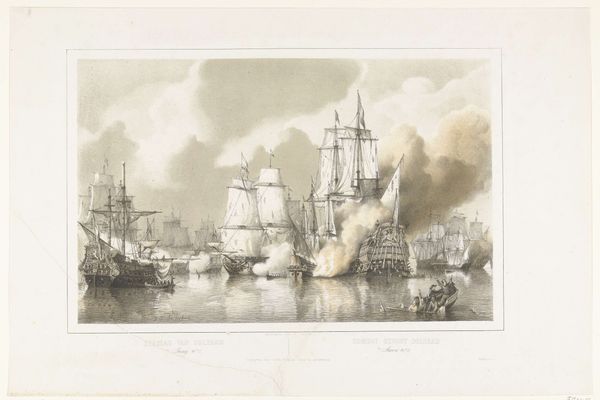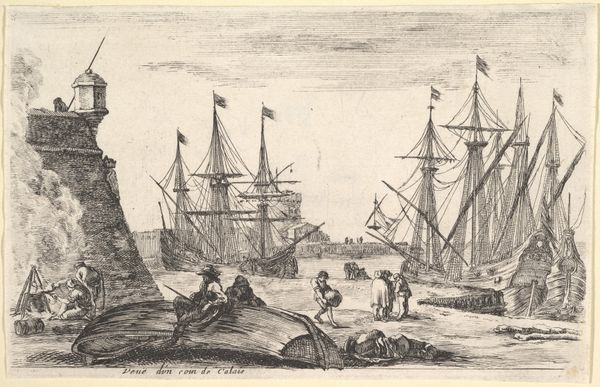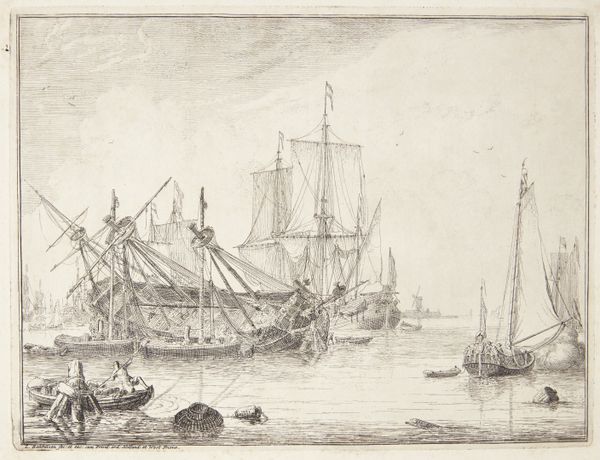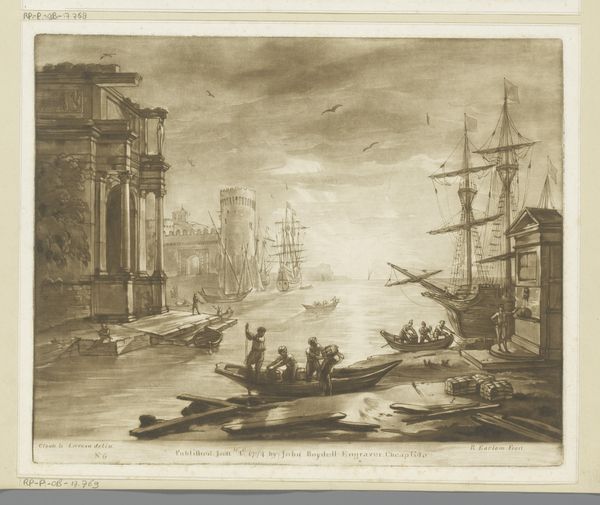
Dimensions: height 207 mm, width 255 mm
Copyright: Rijks Museum: Open Domain
Curator: Here we have Richard Earlom's "Rocky Coast with Moored Sailing Ships", likely from 1774, held here at the Rijksmuseum. It's an engraving, a print of its time. I’m particularly struck by its portrayal of maritime activity within a specific socio-economic context. Editor: You know, when I first look at this, the immediate feeling I get is a kind of hushed expectancy. There's something almost dreamy about it. All those ships huddled together... It feels like they're whispering secrets to each other. Curator: Interesting. From my perspective, that sense of quietude is interwoven with the complexities of trade, power, and labor during that period. Look closely at the city depicted behind the ships and also the labor in the foreground, bringing life to what would otherwise be considered vacant space. It evokes both adventure and also human presence against a backdrop of potentially exploitative colonial activity. Editor: Oh, definitely. It is like there is a story behind this facade of everyday port life. The textures that Earlom managed to capture with an engraving are remarkable too. There’s something almost tactile about the stone, and then that contrast with the sails… they almost look alive. Curator: Absolutely. Technically, Earlom’s choice of engraving enhances the artwork’s didactic capabilities. Prints made art and social commentary accessible to a broader public. I'd like to stress the visual vocabulary typical for representations of cities as active seaports; however, what seems romantic should, for us today, signal a critical gaze into its original context. Editor: And those birds overhead, like small details almost swallowed by the immensity of ships! Little freedoms set against an atmosphere filled to the brim with people performing activities under economic force, an atmosphere which is so thick you can taste it. It makes you think about how our understanding of "landscape" has transformed since Earlom’s era, how we infuse our surroundings with ideas of liberty but still participate in practices whose legacies go back to earlier eras. Curator: Indeed. This image compels us to acknowledge that aesthetics and ethics, the beautiful and the brutal, are often deeply entwined within historical narratives. Editor: Agreed. Next time, I'd like to take the time to look at it alone for at least twenty minutes—to dive into those whispers a bit deeper.
Comments
No comments
Be the first to comment and join the conversation on the ultimate creative platform.
